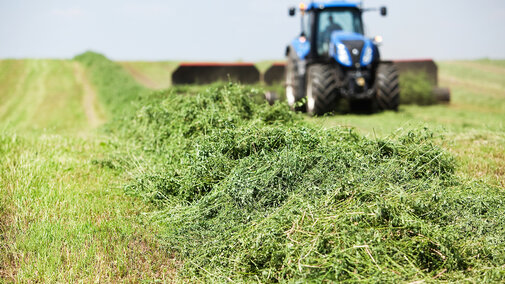Haying season is here, along with the potential for cloudy days and rain.
Other than rain, the most important weather factor affecting the rate of hay dry-down is sunlight. Temperature, humidity, soil moisture content, and wind speed all are important, but solar radiation has the greatest impact on drying rate. In fact, research has shown as much as a 10-fold increase in drying rate as solar radiation changes from heavy cloud cover to full sunlight. No other factor affected drying rate even half as much.
While you can’t control sunlight, you can time your haying operations to take advantage of it and avoid potentially cloudy days.
Another step is to spread your cut hay out in as wide a swath as possible to expose more hay to direct sunlight. This does two things. Sunlight keeps stomates open on the leaves, which is the fastest way for moisture to exit the plant. Stomates in the dark inside or bottom of windrows will close, preventing rapid moisture loss.
Wide windrows also enable hay to absorb as much sun energy as possible to heat hay and help moisture to evaporate. This may bleach hay more than thick windrows, but fast dry-down usually is more valuable than green color.
Another practice to facilitate faster dry-down is to mechanically condition your hay and turn it gently after tops get dry to expose moist hay under the swath to the sun and drying conditions.
“Make hay while the sun shines.” is an old, old saying but today’s science has shown just how true it really is.

